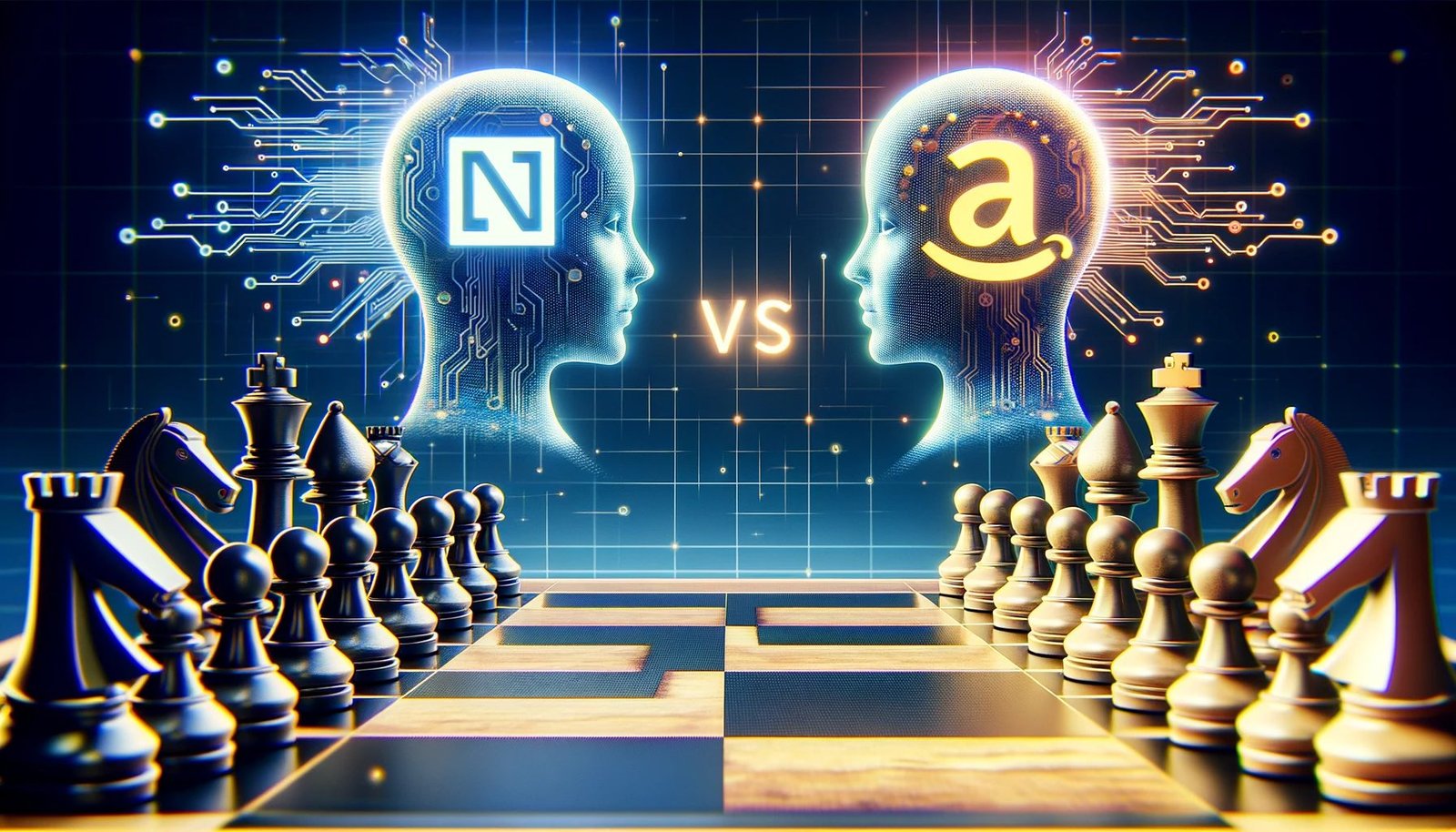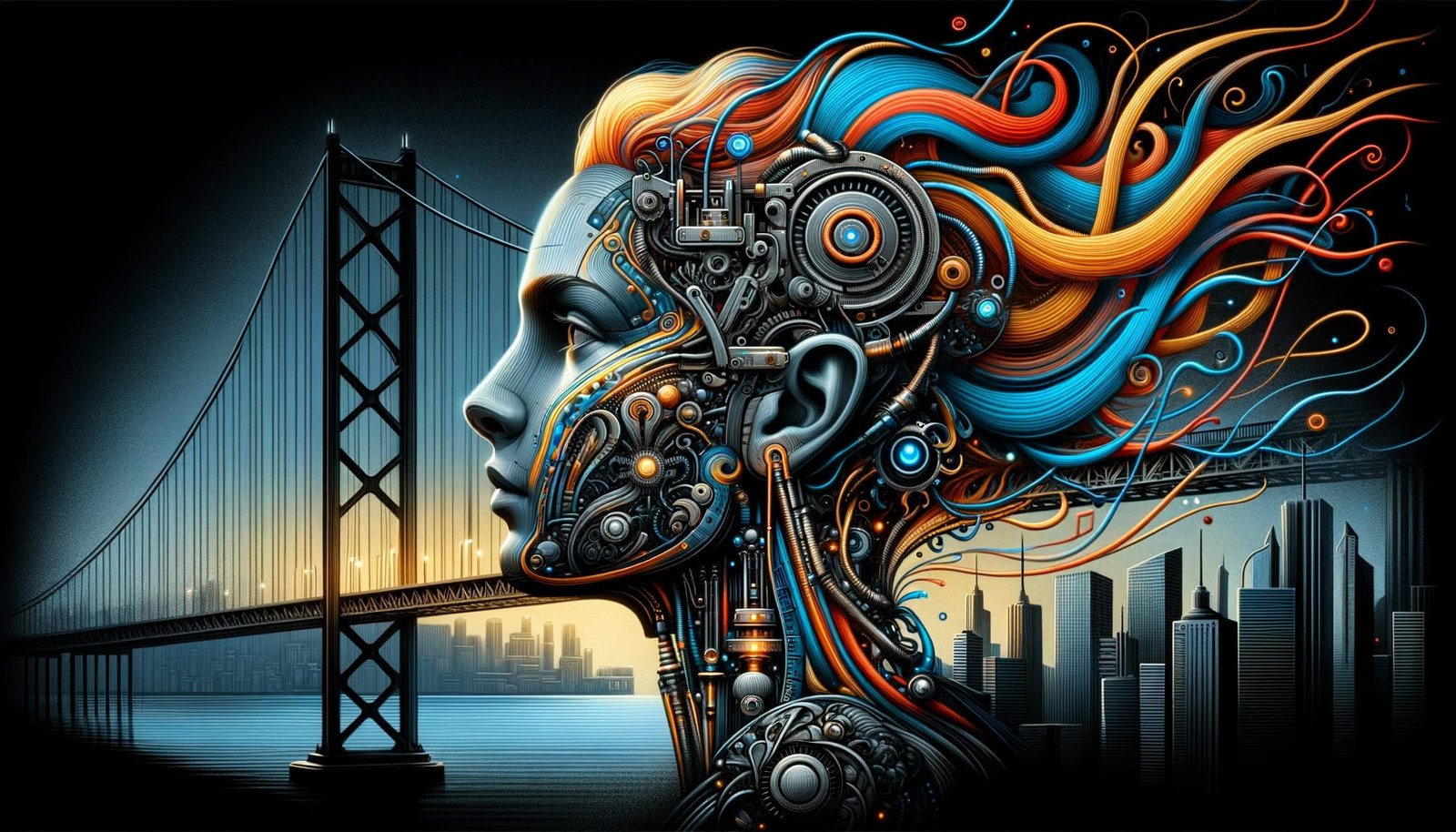Imagen vs DALL-E 3: Which Text-to-Image AI Model Is Right for You?
Imagen vs DALL-E 3: Which Text-to-Image AI Model Is Right for You?
Introduction – Imagen vs DALL-E 3
In recent years, the world has witnessed a transformative shift in the creative domain, largely fueled by advancements in artificial intelligence. No longer confined to mere data analysis or automation, AI now plays a pivotal role in generating art, music, and even visual imagery. As we stand on the cusp of this AI-driven creative revolution, two names have emerged as frontrunners: Imagen and DALL-E 3. In this article, we’ll delve deep into these two powerhouses, comparing their capabilities, applications, and potential impact on the creative industry. Whether you’re a tech enthusiast, a digital artist, or simply curious about the future of AI in creativity, this head-to-head comparison of Imagen vs. DALL-E 3 promises to be an enlightening read.
The emergence of AI in the realm of creative generation.
Artificial intelligence, once a concept limited to science fiction, has now permeated various sectors, including the realm of creative generation. From music composition to digital art creation, AI’s capabilities have expanded, challenging traditional notions of creativity.
Setting the stage for a head-to-head comparison: Imagen vs. DALL-E 3.
In this ever-evolving landscape, two AI-driven tools have captured significant attention: Imagen and DALL-E 3. Both promise to redefine the boundaries of AI-powered creativity, but how do they stack up against each other? This article aims to provide a comprehensive comparison, shedding light on their unique features, strengths, and potential applications.
Introducing Imagen: The New Challenger on the Block
In the dynamic arena of AI-driven creative tools, while DALL-E 3 has been a frontrunner, it’s not without competition. Enter Imagen, a cutting-edge text-to-image AI model that promises to give DALL-E 3 a run for its money. As businesses and creatives ponder over which tool to adopt, understanding Imagen’s offerings becomes paramount.
A first look at Imagen and its promise in the AI creative space.
Imagen, much like DALL-E 3, harnesses the power of advanced neural networks to transform textual descriptions into striking visuals. However, where it seeks to differentiate itself is in its adaptability and user-centric features. Designed with a focus on real-world applications, Imagen aims to cater to a broader audience, from digital marketers to graphic designers.
What sets Imagen apart from other AI tools?
- User-Friendly Interface: Imagen prides itself on its intuitive dashboard, ensuring even those new to AI can navigate with ease.
- Customization Galore: Beyond just generating images, Imagen offers tools for users to tweak and refine outputs to align with their vision.
- Collaborative Features: Recognizing the collaborative nature of creative projects, Imagen integrates features for team-based tasks, feedback, and iterations.
- Affordability: While DALL-E 3’s pricing caters to a specific segment, Imagen’s tiered pricing model seeks to accommodate both startups and established enterprises.
As the AI landscape continues to evolve, the question isn’t just about which tool is superior, but rather, which tool is the right fit for specific needs. As we delve deeper into the capabilities of both DALL-E 3 and Imagen, businesses and individuals must assess their requirements, budget, and long-term vision to make an informed choice.

DALL-E 3: The Pioneer in Text-to-Image Generation
In the ever-evolving realm of artificial intelligence, DALL-E 3 has emerged as a groundbreaking force, reshaping the boundaries of what’s possible in text-to-image generation.
Brief Overview of DALL-E 3 and its Groundbreaking Capabilities
DALL-E 3, an advanced iteration of its predecessor, has been developed by OpenAI. It’s not just another AI model; it’s a revolution in the domain of creative AI. With the ability to transform textual descriptions into vivid and often surreal images, DALL-E 3 has captured the imagination of tech enthusiasts, artists, and businesses alike. Whether you describe a “two-headed flamingo wearing sunglasses” or a “futuristic cityscape at dusk,” DALL-E 3 strives to bring those words to life in visual form.
The model’s prowess doesn’t just stop at generating images from text. It has been fine-tuned to understand context, manage abstract concepts, and even surprise with its interpretations, often adding a creative twist that goes beyond the literal description.
Key Features and Applications that Set the Standard in the Industry
DALL-E 3’s capabilities are vast and varied. Some of its standout features include:
- High-Resolution Image Generation: Unlike some models that might struggle with clarity, DALL-E 3 can produce high-resolution images, making them suitable for a range of applications, from digital art to marketing materials.
- Contextual Understanding: The model has an uncanny ability to grasp context. Describe a scene from a specific era, mood, or setting, and DALL-E 3 will attempt to capture the essence in its generated image.
- Versatility: From surreal art pieces to realistic product mockups, DALL-E 3’s range is impressive. This versatility has made it a favorite among artists, designers, and businesses looking to harness AI for creative projects.
In terms of applications, DALL-E 3 is not just limited to art and design. Businesses have been leveraging it for advertising campaigns, product design brainstorming, and even as a tool to engage audiences on social media platforms. Educational institutions have tapped into its potential as a teaching aid, helping students visualize complex concepts.
In a world where visual content is king, DALL-E 3 stands tall as a pioneer, setting a high bar for what’s achievable with AI in the realm of text-to-image generation. As we continue to explore its potential, one thing is clear: DALL-E 3 has set a new industry standard.
Introducing Imagen: The New Challenger
In the dynamic world of AI-driven creative tools, while DALL-E 3 has been making waves, a new contender has entered the arena: Imagen. As businesses and creators constantly seek innovative tools to elevate their content, Imagen promises to be a game-changer in the text-to-image generation domain.
A First Look at Imagen and its Promise in the AI Creative Space
Imagen, at its core, is designed to bridge the gap between textual imagination and visual representation. While it shares the same foundational goal with DALL-E 3 – converting text to images – early indications suggest that Imagen might be bringing some unique flavors to the table. Whether it’s the nuances in image generation, the depth of contextual understanding, or the sheer quality of output, Imagen is poised to make its mark.
The AI community has been abuzz with discussions about Imagen’s algorithms, training data, and the potential advancements it brings. With a commitment to pushing the boundaries of what’s possible, Imagen is not just another tool but a testament to the rapid advancements happening in the AI creative space.
What Makes Imagen Stand Out in the Crowded AI Landscape?
Several factors contribute to Imagen’s rising prominence:
- Advanced Contextual Interpretation: While many AI models can generate images from text, Imagen’s ability to deeply interpret context and subtleties sets it apart. This results in images that are not just accurate but also rich in detail and depth.
- User-Friendly Interface: For any tool, no matter how advanced, user experience is crucial. Imagen’s platform is designed to be intuitive, making it accessible to both tech-savvy users and those new to the AI world.
- Collaborative Features: Imagen goes beyond individual use. It offers features that allow teams to collaborate, share feedback, and refine generated images, making it a favorite for businesses and creative agencies.
- Continuous Learning: One of the standout features of Imagen is its commitment to continuous learning. The model evolves, adapting to user feedback and the latest trends in the creative industry.
In a landscape teeming with AI tools, Imagen is carving its niche. It’s not just about generating images; it’s about understanding the essence of a description and bringing it to life in the most vivid way possible. As the AI creative revolution continues, tools like Imagen are leading the charge, showcasing the immense potential that lies at the intersection of technology and art.
Core Features: DALL-E 3 vs. Imagen
In the rapidly evolving domain of AI-driven text-to-image generation, both DALL-E 3 and Imagen have emerged as frontrunners. While they share a common goal, their approaches, features, and capabilities offer distinct experiences. Let’s delve into a side-by-side comparison of these two powerful tools.
DALL-E 3: The Trailblazer
1. Advanced Text Interpretation: DALL-E 3 is renowned for its ability to interpret even the most abstract textual prompts, translating them into detailed and contextually relevant images.
2. Extensive Training Data: Built on a vast dataset, DALL-E 3’s image generation is a result of extensive training, allowing it to cater to a wide array of prompts.
3. Dynamic Image Variations: For a single prompt, DALL-E 3 can produce multiple image variations, giving users a range of visual options to choose from.
4. Seamless Integration: DALL-E 3 integrates smoothly with other tools and platforms, making it a favorite for developers and businesses alike.
5. OpenAI Ecosystem: Being a part of the OpenAI ecosystem, DALL-E 3 benefits from continuous updates, research, and advancements in the AI domain.
Imagen: The Rising Star
1. Deep Contextual Understanding: Imagen stands out with its deep contextual understanding, ensuring that generated images are not just accurate but also rich in detail.
2. User-Centric Design: Imagen’s platform is designed with the user in mind. Its intuitive interface ensures a seamless experience, even for those new to the AI world.
3. Collaborative Features: Beyond individual use, Imagen offers collaborative tools, allowing teams to work together, share feedback, and refine images in real-time.
4. Adaptive Learning: Imagen’s model is built to evolve. It learns from user interactions, feedback, and the latest trends, ensuring that its output remains cutting-edge.
5. Customizable Outputs: Imagen offers a range of customization options, allowing users to tweak and refine generated images to align with their specific requirements.
How Each Model Approaches Text-to-Image Generation
While both DALL-E 3 and Imagen leverage advanced neural networks and vast datasets, their approaches differ:
- DALL-E 3 focuses on generating a wide array of image variations from a single prompt, emphasizing creativity and diversity in outputs.
- Imagen, on the other hand, emphasizes deep contextual understanding. It aims to produce images that are not just visually appealing but also deeply aligned with the user’s intent and the text’s nuances.
In conclusion, both DALL-E 3 and Imagen bring unique strengths to the table. While DALL-E 3 is a testament to OpenAI’s prowess in the AI domain, Imagen is showcasing the future of user-centric AI tools. The choice between them boils down to specific requirements, preferences, and the desired user experience.
Quality of Image Generation
In the realm of AI-driven text-to-image generation, the quality of the produced images is paramount. Both DALL-E 3 and Imagen have made significant strides in this area, pushing the boundaries of what’s possible. Let’s delve into an analysis of the visual quality, clarity, and creativity of the images generated by these two models.
DALL-E 3: Setting High Standards
1. Visual Fidelity: DALL-E 3 is known for producing images with high resolution and sharpness. The intricate details, from textures to shadows, are rendered with impressive accuracy.
2. Creativity Unleashed: One of DALL-E 3’s standout features is its ability to interpret abstract prompts. Whether you ask for “a two-headed flamingo wearing a top hat” or “a futuristic cityscape at dusk,” DALL-E 3 delivers with imaginative flair.
3. Contextual Relevance: DALL-E 3 ensures that the generated images align well with the given prompts, maintaining contextual relevance and coherence.
Real-world example: A business promoting eco-friendly products used DALL-E 3 to visualize “a world where trees and buildings coexist harmoniously.” The result was a breathtaking image of skyscrapers intertwined with sprawling branches and foliage, perfectly capturing the brand’s vision.
Imagen: Pushing the Envelope
1. Depth and Dimension: Imagen’s images stand out for their depth and three-dimensionality. Objects and characters in the images feel lifelike, adding a touch of realism.
2. Adaptive Color Palettes: Imagen excels in color representation. Depending on the prompt, it chooses adaptive color palettes that enhance the mood and tone of the image.
3. Artistic Interpretations: While DALL-E 3 leans towards literal interpretations, Imagen often adds an artistic twist, making each image feel like a piece of art.
Real-world example: A travel agency looking to promote “a serene beach vacation at sunset” used Imagen. The generated image showcased a tranquil beach with golden sands, a setting sun casting long shadows, and a hint of watercolor effect, making it look like a beautiful painting.
Comparative Insights
While both models produce high-quality images, their approaches differ:
- DALL-E 3 emphasizes sharpness, detail, and a wide range of interpretations, making it ideal for projects that require diverse visual options.
- Imagen leans towards artistic and mood-enhancing visuals, perfect for projects that aim for emotional resonance and aesthetic appeal.
In the end, the choice between DALL-E 3 and Imagen depends on the specific needs of the project. Whether it’s a marketing campaign, a website design, or a creative exploration, both models offer tools that can bring visions to life in stunning detail.

User Experience and Interface
In today’s digital age, the user experience (UX) and interface (UI) play a pivotal role in the adoption and success of any software or platform. As DALL-E 3 and Imagen both aim to revolutionize the AI creative space, their UX/UI design can significantly impact their usability and appeal. Let’s dive into a comparative analysis of the navigation and user experience offered by these two models.
DALL-E 3: A Familiar Ground
1. Streamlined Interface: DALL-E 3’s interface is clean and minimalistic, ensuring that users can focus on the task at hand without unnecessary distractions.
2. Prompt-based Generation: Users simply input their text prompts, and DALL-E 3 quickly generates corresponding images, making the process straightforward.
3. Integrated Tutorials: For newcomers, DALL-E 3 offers integrated tutorials and guides, ensuring that even those unfamiliar with AI can get started with ease.
4. Feedback Loop: Users can provide feedback on generated images, allowing for continuous improvement and refinement of results.
Imagen: Modern and Intuitive
1. Dynamic Dashboard: Imagen boasts a dynamic dashboard where users can manage their prompts, view generated images, and access advanced settings all in one place.
2. Drag-and-Drop Functionality: For those looking to combine text and existing images, Imagen offers a drag-and-drop feature, enhancing its versatility.
3. Real-time Previews: As users type in their prompts, Imagen provides real-time previews, giving a glimpse of potential outcomes before the final generation.
4. Customizable Settings: Users can tweak various parameters, such as color schemes, styles, and resolutions, allowing for a more personalized experience.
5. Integrated Learning Management Systems: Imagen goes a step further by offering tutorials, webinars, and courses, ensuring users can harness the platform’s full potential.
Comparative Insights
- DALL-E 3 offers a no-frills, straightforward experience, making it ideal for users who prefer simplicity and directness. Its familiar layout, especially for those acquainted with OpenAI’s other tools, ensures a shorter learning curve.
- Imagen, on the other hand, embraces modern design principles, offering a more interactive and immersive experience. Its emphasis on customization and real-time feedback makes it suitable for users who enjoy a hands-on approach.
While DALL-E 3 provides a more streamlined and direct interface, Imagen shines with its dynamic and customizable platform. The choice between the two boils down to individual preferences and the specific requirements of the WordPress web development project or creative endeavor at hand.
Integration and Compatibility
In the rapidly evolving world of AI, the ability to seamlessly integrate and adapt models into existing systems is paramount. Businesses and developers prioritize tools that offer flexibility, ease of integration, and compatibility with a range of platforms. Let’s delve into the integration capabilities of DALL-E 3 and Imagen, examining their SDKs, APIs, and other integration tools.
DALL-E 3: OpenAI’s Integration Prowess
1. Comprehensive API: DALL-E 3 comes with a robust API, allowing developers to easily integrate its capabilities into various applications, websites, and platforms.
2. SDK Support: OpenAI provides SDKs in multiple languages, including Python, Java, and Node.js, catering to a wide developer audience.
3. Documentation: OpenAI is known for its extensive documentation, offering detailed guides, tutorials, and best practices, ensuring a smooth integration process.
4. Cloud Compatibility: DALL-E 3 is optimized for cloud platforms, making it easier for businesses to scale and deploy on platforms like AWS, Google Cloud, and Azure.
5. Community Support: With a vast community of developers and users, finding solutions to integration challenges or getting insights on best practices is simplified.
Imagen: The New Age Integration
1. Modular API: Imagen offers a modular API, allowing developers to pick and choose specific functionalities, ensuring a lightweight and efficient integration.
2. Cross-Platform SDKs: Imagen provides SDKs for a variety of platforms, including mobile (iOS, Android), ensuring a broader reach.
3. Plug-and-Play Widgets: For businesses looking for quick integration, Imagen offers plug-and-play widgets that can be embedded into websites or apps without extensive coding.
4. Integration Partnerships: Imagen has partnerships with popular platforms like WordPress, Shopify, and more, offering pre-built plugins and extensions.
5. Developer Portal: Imagen’s dedicated developer portal offers resources, sample codes, and interactive API explorers, making the integration journey more intuitive.
Comparative Insights
- DALL-E 3 leverages OpenAI’s legacy of providing developer-friendly tools. Its comprehensive API and extensive documentation make it a reliable choice for businesses familiar with OpenAI’s ecosystem.
- Imagen emphasizes modern integration solutions, from modular APIs to plug-and-play widgets. Its focus on cross-platform SDKs and integration partnerships showcases its commitment to flexibility and adaptability.
While DALL-E 3 offers a tried-and-tested integration framework backed by OpenAI’s reputation, Imagen brings fresh, innovative solutions to the table. The decision between the two would depend on the specific integration needs, existing platforms, and the desired level of customization for the WordPress web development project or any other application.
Pricing and Accessibility
In today’s competitive AI market, pricing and accessibility play a pivotal role in influencing adoption rates. Both DALL-E 3 and Imagen, being frontrunners in the text-to-image generation domain, have their unique pricing structures. Let’s delve into the cost dynamics of these two models and determine which offers better value for money.
DALL-E 3: OpenAI’s Pricing Model
1. Tiered Subscription: DALL-E 3 typically follows a tiered subscription model. Users can choose from basic, premium, or enterprise packages, each offering varying levels of access and features.
2. Pay-as-you-go: For developers and businesses with fluctuating needs, DALL-E 3 provides a pay-as-you-go option, where users are billed based on the number of images generated.
3. Free Tier: OpenAI often offers a free tier with limited access, allowing users to test and experiment with the model before committing to a paid plan.
4. Discounts: Special discounts might be available for startups, educational institutions, and non-profits.
5. Accessibility: Being a product of OpenAI, DALL-E 3 is widely accessible, with extensive documentation and community support, making it easier for users to understand the pricing nuances.
Imagen: The Challenger’s Approach
1. Flat-rate Subscription: Imagen opts for a more straightforward flat-rate monthly or annual subscription, covering all features without any limitations.
2. Custom Plans: For larger enterprises with specific needs, Imagen offers custom plans tailored to their requirements.
3. Trial Period: Imagen provides a trial period, allowing potential users to explore the platform’s capabilities without any financial commitment.
4. Bundle Offers: Imagen occasionally bundles its text-to-image service with other AI services, offering a comprehensive package at a discounted rate.
5. Accessibility: With a user-friendly interface and transparent pricing structure, Imagen ensures that users, regardless of their technical expertise, can easily access and understand its offerings.
Comparative Insights
- DALL-E 3 offers flexibility with its tiered and pay-as-you-go models, catering to a wide range of users, from individual developers to large enterprises. The free tier and discounts further enhance its appeal to a broader audience.
- Imagen, on the other hand, simplifies the pricing landscape with its flat-rate and custom plans. The trial period and bundle offers make it an attractive option for those looking for comprehensive AI solutions without any hidden costs.
The better value for money between DALL-E 3 and Imagen largely depends on the specific needs and budget constraints of the user. While DALL-E 3 offers granularity in its pricing, Imagen’s transparent and straightforward approach might appeal to those looking for hassle-free WordPress web development services or other creative projects.
Community and Support
In the rapidly evolving world of AI, having a robust community and support system is crucial. It not only aids users in navigating challenges but also fosters innovation and collaboration. Both DALL-E 3 and Imagen have made significant strides in this domain. Let’s delve into the community feedback and support mechanisms of these two models.
DALL-E 3: OpenAI’s Community Engagement
1. Vibrant User Community: Being a product of OpenAI, DALL-E 3 boasts a vast and active community. Forums, discussion boards, and social media groups are buzzing with user-generated content, tips, and tricks.
2. Testimonials: Many users praise DALL-E 3 for its groundbreaking capabilities in text-to-image generation, with some even terming it a “game-changer” in the WordPress web development and creative fields.
3. Resources: OpenAI provides extensive documentation, tutorials, and research papers on DALL-E 3, aiding both novice and experienced users.
4. Support: A dedicated support team, coupled with an active community, ensures that users’ queries and issues are addressed promptly.
Imagen: Building a Loyal User Base
1. Growing Community: Imagen, though relatively newer, has been successful in building a loyal user base. Its community, though smaller than DALL-E 3’s, is passionate and engaged.
2. User Feedback: Testimonials for Imagen often highlight its user-friendly interface and high-quality image generation. Some users also appreciate its seamless integration capabilities, especially for e-commerce website development.
3. Learning Resources: Imagen offers a plethora of resources, including video tutorials, webinars, and blog posts, catering to users at different proficiency levels.
4. Dedicated Support: Imagen’s support team is known for its quick response times and in-depth assistance, ensuring users have a smooth experience.
Comparative Insights
- DALL-E 3 benefits from OpenAI’s established reputation, resulting in a larger community and a wealth of resources. Its users range from hobbyists experimenting with AI to professionals integrating it into WordPress business websites.
- Imagen, though a challenger, has quickly built a name for itself. Its focused approach to community building and emphasis on user support make it a formidable contender in the AI space.
While DALL-E 3 offers the advantage of a vast community and extensive resources, Imagen’s dedicated support and growing user base make it a worthy alternative. For businesses and individuals, the choice between the two would depend on their specific needs, be it for WordPress consulting websites or other creative projects.
Real-World Applications and Case Studies
In the realm of AI-driven text-to-image generation, both DALL-E 3 and Imagen have found applications across various industries. Their capabilities have been harnessed by businesses, creatives, and developers alike. Let’s explore some real-world applications and case studies that showcase the tangible benefits of these models.
DALL-E 3: Pushing Creative Boundaries
1. Digital Art Creation: Renowned digital artists have used DALL-E 3 to generate unique artworks, some of which have been showcased in galleries and even sold for impressive amounts.
2. Advertising and Marketing: Brands have leveraged DALL-E 3 to create innovative ad campaigns. For instance, a startup in the WordPress gym and fitness website niche used DALL-E 3 to visualize workout routines in creative ways, leading to increased user engagement.
3. Educational Tools: DALL-E 3 has been integrated into educational platforms, especially in WordPress learning websites (LMS), to generate visual aids that complement textual content, enhancing the learning experience.
Case Study: A Fashion Brand’s Success with DALL-E 3
A leading fashion brand, aiming to revolutionize its WordPress e-commerce website development, integrated DALL-E 3 to generate unique apparel designs based on textual descriptions. The result? A 30% increase in sales, as customers were thrilled with the innovative and personalized designs.
Imagen: Beyond Conventional Image Generation
1. Product Prototyping: Businesses, especially in the Shopify e-commerce website development sector, have used Imagen to visualize product prototypes based on textual descriptions, speeding up the design process.
2. Gaming and Entertainment: Game developers have harnessed Imagen to create game environments, characters, and assets based on storyline descriptions.
3. Interior Design Visualization: Interior designers have utilized Imagen to generate room layouts and decor visuals based on client briefs, enhancing client satisfaction.
Case Study: Boosting Real Estate Sales with Imagen
A real estate company, specializing in WordPress real estate websites, integrated Imagen to offer potential buyers visualizations of properties based on their preferences. This personalized approach led to a 25% increase in property inquiries and a 15% boost in sales.
Comparative Insights
- DALL-E 3 has been a favorite among creatives, especially in the digital art and advertising sectors. Its ability to generate unique visuals has made it a go-to tool for many in the WordPress web development for art domain.
- Imagen, with its precision and adaptability, has found favor among businesses looking for practical applications, be it in product design, real estate, or e-commerce.
While both models offer impressive capabilities, their real-world applications are determined by the specific needs and objectives of the users. Whether it’s for WordPress blog websites or e-commerce platforms, the potential of these AI models is vast and continues to grow.
The Future: Predictions for DALL-E 3 and Imagen
The realm of creative AI, particularly in text-to-image generation, is still in its nascent stages. Yet, the advancements we’ve seen with models like DALL-E 3 and Imagen are nothing short of revolutionary. As we look to the future, several predictions and trends emerge, hinting at the trajectory these models might take and the potential impact on the broader AI landscape.
Continuous Refinement and Higher Resolution
Both DALL-E 3 and Imagen are expected to undergo continuous refinement. As more data becomes available and algorithms become more sophisticated, we can anticipate even higher resolution images with intricate details. This would be particularly beneficial for industries like WordPress web development for photography or Shopify e-commerce website development, where image quality is paramount.
Enhanced Interactivity
Future iterations might allow users to interact with generated images in real-time, tweaking certain elements or adjusting parameters to get the desired output instantly. This real-time feedback loop can revolutionize user experience, especially for WordPress landing page websites or Shopify business websites, where visual aesthetics play a crucial role in user engagement.
Integration with Augmented Reality (AR) and Virtual Reality (VR)
As AR and VR technologies mature, there’s potential for DALL-E 3 and Imagen to integrate with these platforms. Imagine a scenario where textual descriptions are instantly visualized in a virtual space, enhancing experiences in gaming, education, or even WordPress tour and travel websites.
Collaborative AI Endeavors
The future might see DALL-E 3, Imagen, and other AI models working collaboratively. For instance, a text-to-image model could work in tandem with a voice AI, offering a multi-modal experience for users. Such integrations can be game-changers for sectors like WordPress web development for podcasting or WordPress web development for vlogging.
Ethical Considerations and Guidelines
As these models become more mainstream, there will be a growing emphasis on ethical considerations. Ensuring that generated content is free from biases, respecting copyright laws, and setting guidelines for usage will become paramount. Platforms offering WordPress web development services or Shopify consulting websites might need to incorporate these considerations into their frameworks.
The future of creative AI, with DALL-E 3 and Imagen at the forefront, is brimming with possibilities. As technology evolves, so will the applications and implications of these models. For businesses, creatives, and developers, staying updated with these trends will be crucial. Whether it’s harnessing these tools for WordPress energy saving websites or exploring new frontiers in AI-driven art, the journey ahead promises to be exciting and transformative.

Making the Choice: Factors to Consider
Choosing between DALL-E 3 and Imagen for text-to-image generation is a significant decision for businesses and individuals alike. Both platforms offer impressive capabilities, but the best choice often depends on specific needs and objectives. Here’s a checklist to guide the decision-making process:
1. Objective and Application
- DALL-E 3: Best suited for high-quality, artistic image generation.
- Imagen: Might offer more industry-specific outputs tailored to business needs.
2. Quality and Accuracy
- Evaluate the visual quality, clarity, and relevance of generated images from both platforms.
- Consider the consistency of outputs for repeated prompts.
3. Ease of Use
- DALL-E 3: Does it offer an intuitive interface for users familiar with OpenAI’s ecosystem?
- Imagen: How user-friendly is the platform for beginners?
4. Integration Capabilities
- Assess how easily each tool can be integrated into existing systems, be it a WordPress business website or an e-commerce platform.
5. Cost Implications
- Compare the pricing structures of both platforms.
- Determine which offers better value for money, especially for long-term use.
6. Scalability
- Can the chosen platform handle increasing demands as your business or project grows?
7. Customization Options
- Which platform offers more flexibility in tweaking settings or refining outputs?
8. Community and Support
- Evaluate the strength and responsiveness of the community and support for each platform.
- Are there ample resources, like WordPress web development tutorials, available for users?
9. Future-Proofing
- Consider the roadmap and future development plans for both platforms.
- Which seems more committed to innovation and regular updates?
10. Real-World Feedback
- Seek testimonials and reviews from users who have tried both platforms.
- Understand their experiences, challenges, and recommendations.
11. Ethical and Responsible AI
- Ensure the platform adheres to ethical guidelines, respects copyright, and generates unbiased content.
12. Trial and Testing
- If possible, run a pilot project or trial with both platforms.
- Assess firsthand which meets your requirements better.
While both DALL-E 3 and Imagen are powerful tools in the realm of text-to-image generation, the right choice hinges on individual needs, budget, and long-term objectives. By considering the factors in this checklist, businesses and individuals can make a well-informed decision that aligns with their goals.
Conclusion
In the rapidly evolving world of AI-driven creative tools, both DALL-E 3 and Imagen have emerged as frontrunners in the text-to-image generation domain. Each platform brings its unique strengths to the table, offering users a plethora of options to harness the power of AI for their creative endeavors.
DALL-E 3, a product of OpenAI, has been a game-changer since its inception. Its ability to produce high-quality, artistic images from textual prompts has been nothing short of revolutionary. The platform’s robustness and consistency in generating images have made it a favorite among artists, designers, and businesses looking for top-tier visual content. Its integration capabilities, especially for platforms like WordPress business websites, further enhance its appeal.
On the other hand, Imagen has carved a niche for itself with its industry-specific outputs and user-friendly interface. For businesses and individuals who require more tailored results, Imagen might offer a slight edge. Its promise in the AI creative space, combined with its potential for customization, makes it a formidable contender against DALL-E 3.
However, no tool is without its weaknesses. While DALL-E 3 excels in artistic image generation, it might not always align with specific industry needs. Imagen, although versatile, might have a learning curve for those accustomed to other AI platforms.
So, which model is the best fit? The answer largely depends on the user. For those seeking artistic brilliance and high-quality images, DALL-E 3 might be the way to go. However, for businesses and individuals looking for more tailored outputs and a platform that can seamlessly integrate with other tools, like WordPress web development services, Imagen could be the better choice.
In the end, the AI landscape is vast and ever-changing. Both DALL-E 3 and Imagen offer incredible potential, and the best choice will always hinge on individual needs and objectives. As AI continues to evolve, it’s an exciting time for creatives and businesses alike, with tools like these at their fingertips.
The world of AI-driven creativity is at your fingertips, and the power to shape its future lies with you, the users. We encourage you to dive in and test out both DALL-E 3 and Imagen. Whether you’re a business looking to integrate these tools into your WordPress business websites or an individual eager to explore the boundaries of AI-generated art, your experiences will be invaluable.
Have you already tried one or both of these models? We’d love to hear from you! Share your creations, insights, and feedback. Your perspectives will not only enlighten others but also play a crucial role in shaping the next generation of text-to-image AI models.
Join the conversation and be a part of this exciting journey. Let’s discuss, debate, and envision the future of text-to-image generation together. Dive into the world of AI creativity, and don’t forget to share your masterpieces with us!
Additional Resources
For those keen to delve deeper into DALL-E 3 and Imagen, here are some invaluable resources to get you started:
- DALL-E 3 Tutorials and Guides:
- Imagen Resources:
- Comparative Analysis:
- General AI Creativity Forums:
- What are the primary differences between Imagen and DALL-E 3?
- A comparison of the core functionalities, algorithms, and capabilities of both AI models.
- How does the image generation quality of Imagen compare to DALL-E 3?
- An analysis of the visual outputs, detailing the clarity, accuracy, and creativity of each model.
- Which AI model is more user-friendly for beginners: Imagen or DALL-E 3?
- A look into the ease of use, interface, and learning curve associated with both tools.
- Are there any cost differences between using Imagen and DALL-E 3?
- A breakdown of the pricing models, subscription plans, and any additional costs associated with each platform.
- How do Imagen and DALL-E 3 handle complex text prompts and abstract concepts?
- An exploration of the models’ ability to interpret and visualize intricate and non-literal text inputs.
- Which AI model offers better integration capabilities with other software and platforms?
- Information on API access, third-party integrations, and compatibility with other tools.
- How do the training datasets for Imagen and DALL-E 3 differ, and how does this impact their performance?
- Insights into the data sources, training methodologies, and potential biases of each model.
- What kind of support, documentation, and community backing does each platform offer?
- A comparison of the resources, forums, and customer support options available to users.
- Are there any notable use cases or success stories associated with Imagen and DALL-E 3?
- Real-world examples showcasing the effectiveness and applications of each tool in various industries.
- Considering future developments, which platform, Imagen or DALL-E 3, seems more promising in terms of updates and enhancements?
- A look into the roadmaps, upcoming features, and potential growth trajectories of both AI models.










